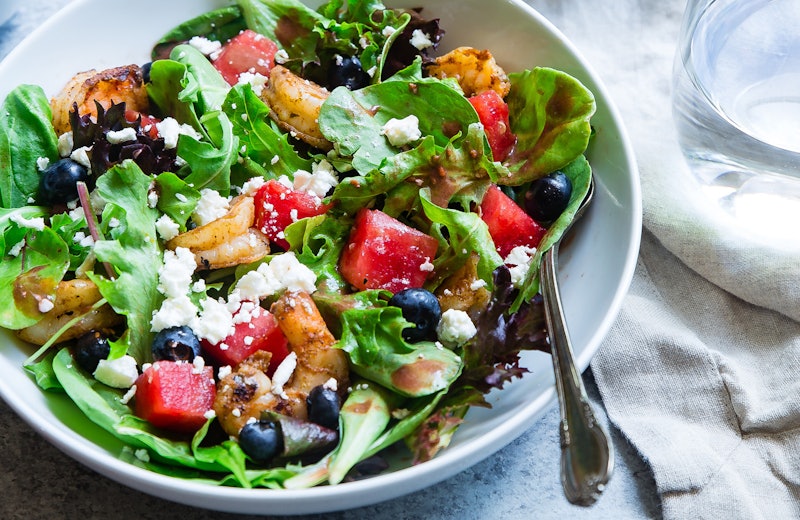Notes from The Cube: Future 50 and Seeds for Survival
While our Friday post-lunch tradition is to serve dessert treats during Sugar Cube presentations, Associate Principal Mark Herter reminded us why that is not always good for our health or for the environment.
Prior to architecture, Mark was in the food and beverage industry. He keeps current on evolving trends in the restaurant world, and faithfully prepares hearty salads for lunch. He described how poorly many Americans eat – empty calories packed with sugars and carbohydrates. While convenient and cheap, he argues that Twinkies, white bread, and other ultra-processed foods, are not really food at all.

Three types of lentils. Credit: Justinc via Wikimedia Commons

Plated salad. Credit: Taylor Kiser via Unsplash
Generations of this behavior, Mark explained, have caused a sharp decline in the number of edible plants produced worldwide, from 120,000 in 1900 to fewer than 30,000 today, of which we eat only about 150. In fact, nearly 75 percent of the global food supply comes from just 12 crops and five animals. Further, nearly 60 percent of our calories come from just three crops. Unhealthy for us, unsustainable for the planet.
There is hope. Beyond the farm-to-table movement, chefs like Erik Oberholtzer of California’s Tender Greens fast-casual restaurant chain are experimenting daily with organic fruits, plants, meats, nuts, and seeds to create fresh, beautifully presented food at affordable prices. Partnering with Crop Trust in 2017, Oberholtzer champions biodiversity, reintroducing “forgotten foods” like those found in the Global Seed Vault buried deep in Norway’s permafrost. And the food and beverage brand Knorr has launched a campaign for healthier eating. The goal of Future 50 Foods is to promote diet diversity, creating healthier people and a healthier planet. Mark extended that challenge to all of us.

Mark's presentation setup. Credit: Derek Hayn
To tickle our taste buds, Mark brought ingredients for a healthy lunch and dessert. His favorite, the lunch salad, was arugula with caramelized onions, walnuts, and goat cheese. And for dessert: Greek yogurt topped with blueberries, “superfoods” like almonds and sesame seeds, and flax seed, an ancient crop that reduces inflammation, and also helps prevent heart disease and rheumatoid arthritis.
We accepted and met Mark’s challenge: the salad and yogurt disappeared; the box of dessert treats was still full.
Header image: Global Seed Vault. Credit: Frode Ramone via Wikimedia Commons.
We're using cookies to deliver you the best user experience. Learn More
